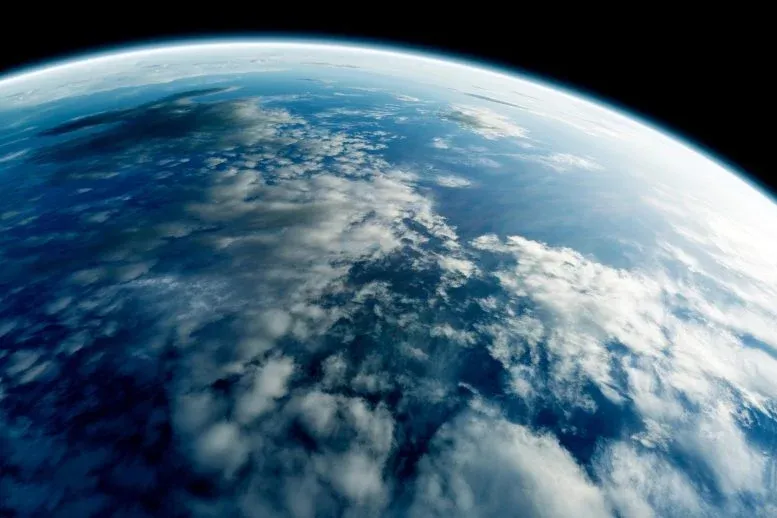Microplastics have been found in almost every environment on Earth, from the deepest parts of the ocean to the highest peaks of mountains. But what happens when these tiny plastic particles enter the atmosphere? Researchers at Penn State University have made a groundbreaking discovery that suggests microplastics may be altering weather and climate patterns by facilitating ice formation in clouds.
The study, published in the journal Environmental Science and Technology: Air, demonstrates that microplastics act as ice nucleating particles, microscopic aerosols that facilitate the formation of ice crystals in clouds. This means that microplastics could impact precipitation patterns, weather forecasting, climate modeling, and even aviation safety by influencing how atmospheric ice crystals form clouds.
What are Ice Nucleating Particles?
Ice nucleating particles (INPs) are tiny particles that can act as nuclei for the formation of ice crystals in clouds. These particles can be found naturally, such as dust, pollen, and sea salt, but human-made particles like microplastics have also been identified as INPs.
How Do Microplastics Affect Cloud Formation?
When microplastics enter the atmosphere, they can act as INPs by providing a surface for ice crystals to form around. This process is known as immersion freezing, where the water droplet in the cloud freezes onto the surface of the microplastic particle.
In the study, researchers suspended four types of microplastics (low-density polyethylene, polypropylene, polyvinyl chloride, and polyethylene terephthalate) in small droplets of water and measured their ability to form ice crystals. The results showed that all four types of plastics could act as INPs, but the extent of this effect varied depending on the type of plastic.
The Impact of Environmental Aging
The researchers also found that environmental aging, the natural photochemical processes that aerosol particles experience over time, can significantly change how microplastics interact with gases and vapors in the atmosphere. In some cases, aging reduced the ice-forming ability of certain plastics, while in others it increased it.
What Does This Mean for Climate Change?
The discovery of microplastics as INPs has significant implications for our understanding of climate change. If microplastics are influencing cloud formation and precipitation patterns, they could potentially affect global temperatures and weather extremes.
However, the impact of microplastics on climate is still not well understood and requires further research. The researchers plan to study a variety of additives commonly used in plastics to better understand their effects on the atmosphere.
Future Research Directions
The study highlights the need for further research into the impacts of human-made particles like microplastics on the environment. Future studies should focus on:
* Investigating the impact of different types and sizes of microplastics on cloud formation
* Examining the effects of environmental aging on microplastic properties
* Developing methods for detecting and quantifying microplastics in clouds
Conclusion
The discovery of microplastics as INPs is a significant finding that highlights the complex interactions between human-made particles and the environment. Further research is needed to fully understand the impact of microplastics on climate change, but this study provides an important step forward in our understanding of this critical issue.
Recommendations for Action
The findings of this study have implications for policy and practice. Governments and industry leaders should consider the following recommendations:
* Implementing policies to reduce plastic pollution
* Developing methods for detecting and removing microplastics from the atmosphere
* Conducting further research into the impacts of microplastics on climate change
By taking action to address plastic pollution, we can help mitigate the impact of microplastics on our environment and protect future generations.
The Future of Climate Research
Climate research is a rapidly evolving field that requires continued investment and innovation. The discovery of microplastics as INPs is an exciting example of how scientists are pushing the boundaries of our understanding of the Earth’s systems. As we move forward, it is essential that we prioritize research into the impacts of human-made particles on the environment.
The Importance of Public Engagement
Climate change is a pressing issue that affects us all. By engaging with the public and promoting education and awareness, we can build a broader movement to address this critical challenge. The discovery of microplastics as INPs highlights the need for continued research into the impacts of human-made particles on the environment.
By working together, we can build a more sustainable future that protects our planet for generations to come.
References
* Busse, H. L., Ariyasena, D. D., Orris, J., & Freedman, M. A. (2024). Pristine and aged microplastics can nucleate ice through immersion freezing. Environmental Science and Technology, 58(19), 13474-13483.
* DOI: 10.1021/acsestair.4c00146

0 Comments